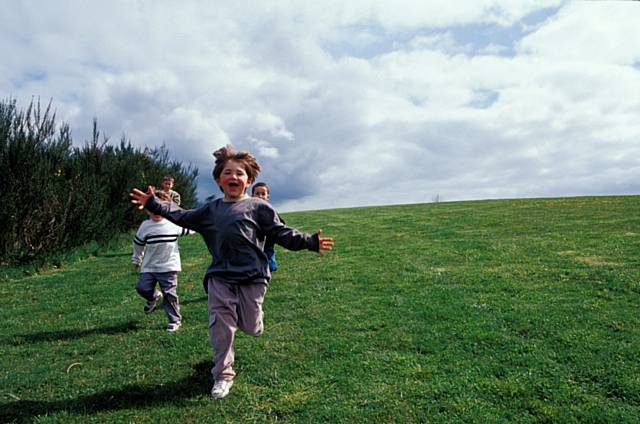Physical activity levels may start tailing off by age of seven in both boys and girls
Date published: 13 March 2017

Physical activity levels may start tailing off by age of seven in both boys and girls
Physical activity levels may start tailing off as early as the age of seven, rather than during adolescence as is widely believed, reveals a long term study of British children, published online in the British Journal of Sports Medicine.
There is no evidence to indicate that the decline is greater among girls than it is among boys, the findings show.
The prevailing view among policy makers and health professionals is that physical activity levels during childhood are adequate, but fall sharply during adolescence, and that the decline is significantly greater among girls, say the researchers.
There is actually very little hard evidence to back this up, and what research has been carried out in this area has mostly been done before the impact of new technologies would have been felt, they add.
In a bid to quantify the timing of any changes, they tracked the physical activity levels of a representative sample of around 400 children taking part in the Gateshead Millennium Cohort Study in North East England over a period of eight years (2006-15).
Physical activity levels were measured when the children were seven, nine, 12 and 15, using a small lightweight portable monitor (Actigraph), worn for seven days at a time. This recorded activity for 15 second intervals, and was removed only at night, and for bathing/swimming.
As an additional back-up, the families involved were asked to log when devices were worn and removed each day.
Overall, the total volume of physical activity fell from the age of seven onwards in both boys and girls during this time, with declines no steeper during adolescence than in earlier childhood.
The decline was not uniform, the data showed.
Four distinct patterns emerged for the boys: low levels that slowly tailed off from the age of seven (3% of the sample); initially high but rapidly declining levels from the age of seven (17%); moderate levels that gradually tailed off from the age of seven (61%); and stable levels of moderate to vigorous physical activity throughout (19%).
There were three different patterns among the girls: low levels of physical activity to start with, which slowly declined from the age of seven (19%); moderate levels that gradually tailed off from the age of seven (62%); and high initial levels that fell sharply from the age of seven onwards (19%).
This is an observational study, so no firm conclusions can be drawn about cause and effect, added to which, although representative of North East England, the study findings may not be applicable to other areas of the country, or other nations, say the researchers.
They point out: “The present study found that 100% of boys and girls fitted into longitudinal trajectories which were inconsistent with the orthodox view that physical activity begins to decline at adolescence, declines much more rapidly at adolescence and/or declines much more rapidly in adolescent girls than boys.”
The research did not set out to examine the reasons behind the changes, but finding out why around one in five of the boys managed to maintain levels of moderate to vigorous physical activity throughout the study period might help to inform future policy and practice, they suggest.
The findings indicate that a shift in research focus might be warranted, they say. “The study questions the concept of the adolescent girl as a priority for research and policy efforts in physical activity,” they point out.
“Future research and public health policy should focus on preventing the decline in physical activity which begins in childhood, not adolescence, and providing an improved understanding of the determinants of the different physical activity trajectories, including an understanding of the relative importance of biological and environmental influences,” they emphasise.
Do you have a story for us?
Let us know by emailing news@rochdaleonline.co.uk
All contact will be treated in confidence.
Most Viewed News Stories
- 1Newhey's Char Steakhouse and Bank Chamber close with immediate effect
- 2Two men arrested after police chase ends up in Middleton river
- 3Six men arrested in Rochdale child exploitation investigation
- 4Man charged in connection with assault on Christmas Eve in Sudden
- 5Six men charged in connection with child exploitation investigation
To contact the Rochdale Online news desk, email news@rochdaleonline.co.uk or visit our news submission page.
To get the latest news on your desktop or mobile, follow Rochdale Online on Twitter and Facebook.


